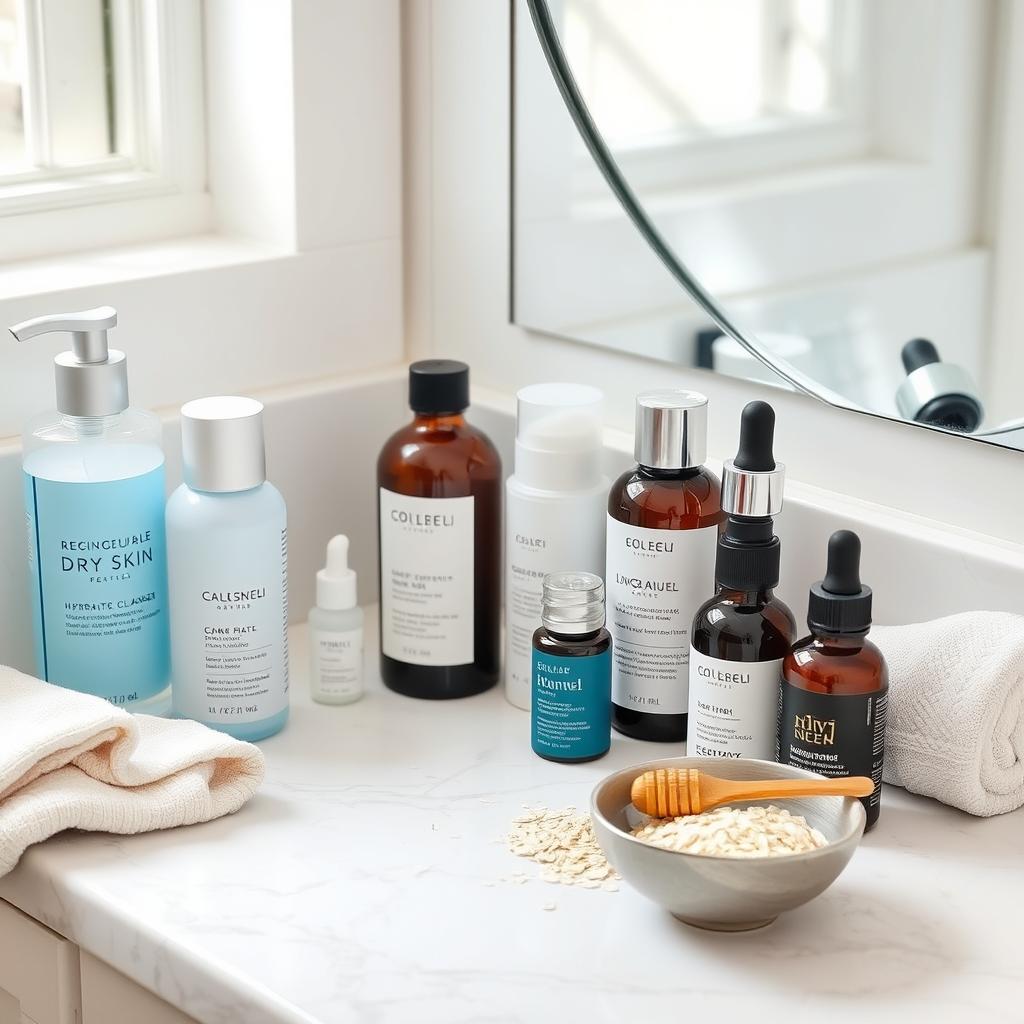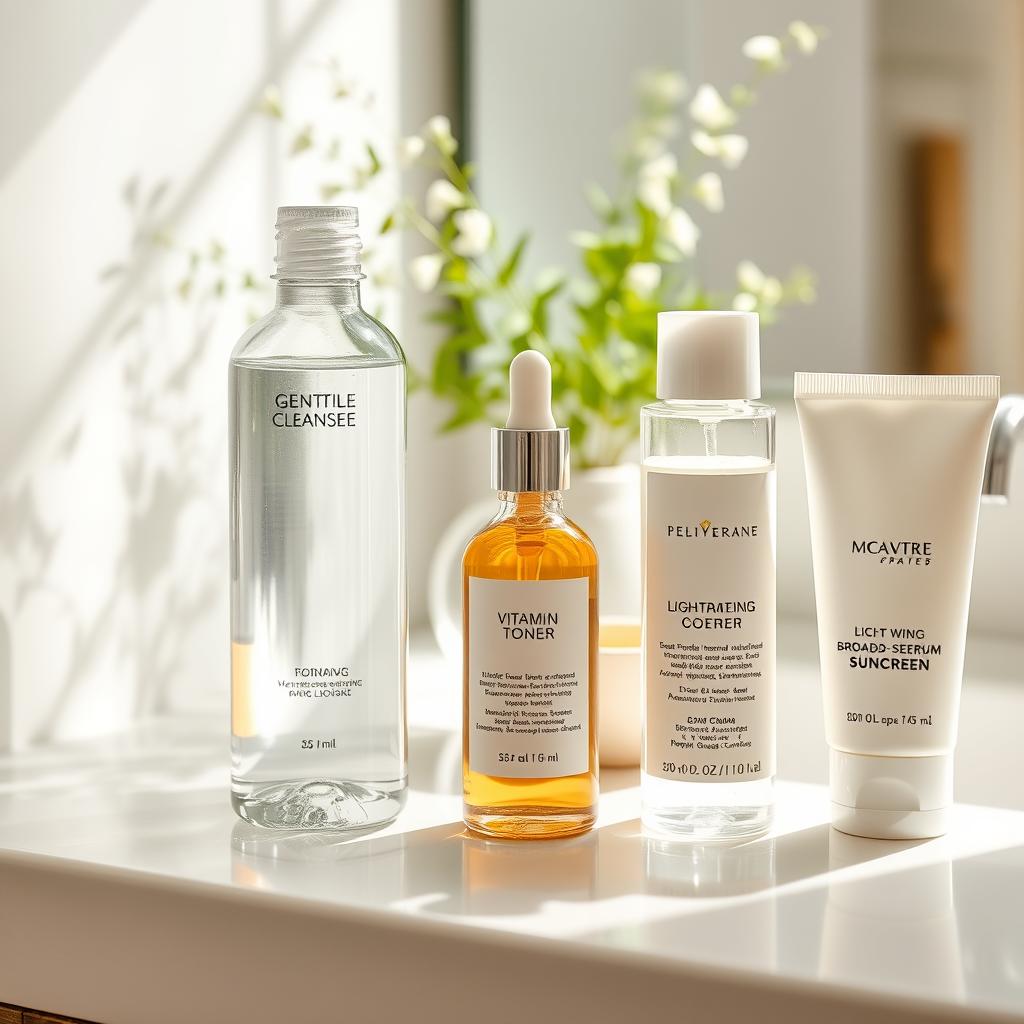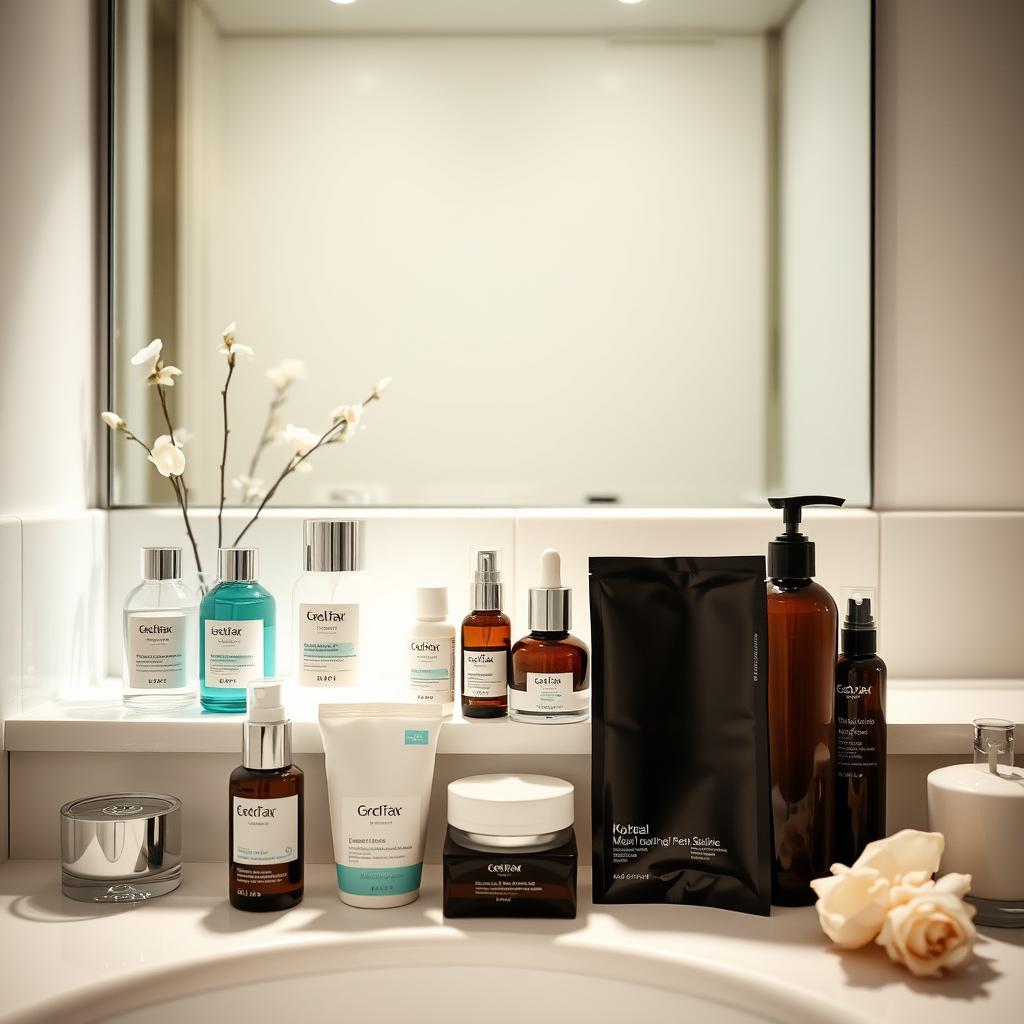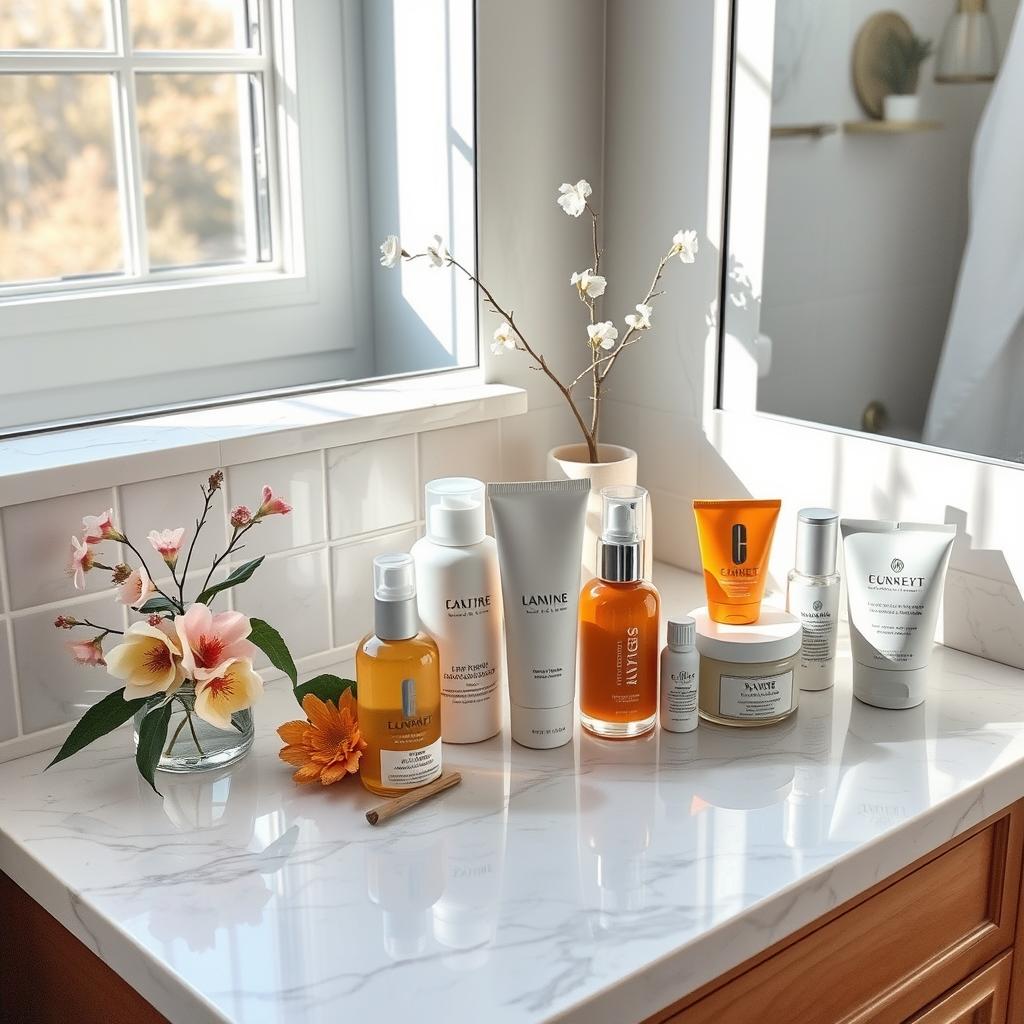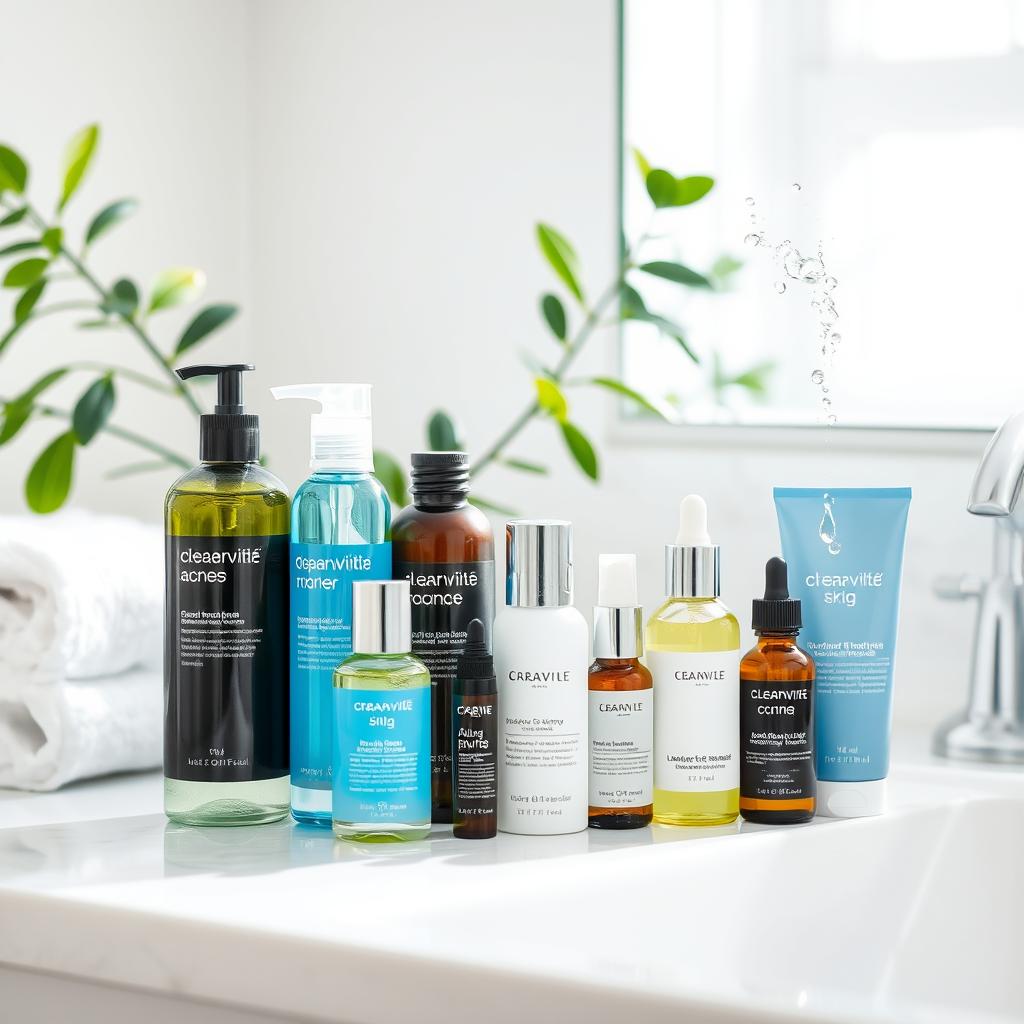7 Essential Steps for a Dry Skin Skincare Routine
Are you tired of dealing with dry, flaky skin? It feels tight and uncomfortable. What if I told you a targeted dry skin care routine could change your skin forever?
I’ve battled dry skin for years and know the struggle. I found a way to fix it with a detailed moisturizing method. This routine fixes the skin’s moisture barrier and brings back a healthy glow.
Dry skin doesn’t have enough water or natural oils. This weakens the skin’s protective layer. By following these seven steps, you’ll learn to keep your skin hydrated, no matter your age or skin type.
Key Takeaways
- Understand the unique challenges of dry skin
- Learn targeted moisturizing techniques
- Develop a consistent skincare routine
- Protect your skin’s natural barrier
- Adapt your routine to seasonal changes
- Use hydrating ingredients strategically
- Prioritize gentle, nourishing products
Understanding Dry Skin
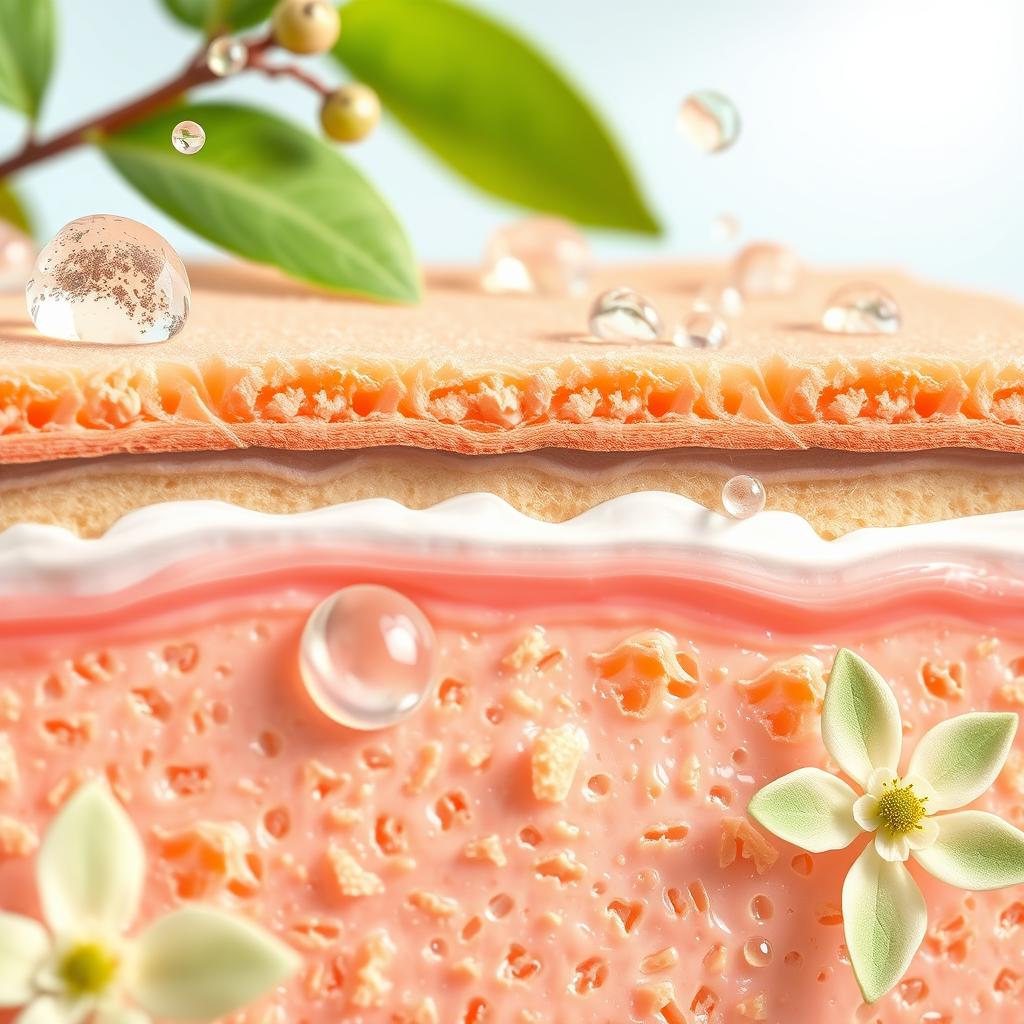
Dry skin is more than just a surface-level concern. My journey to understand skin health showed me how our body’s largest organ works. It’s all about keeping moisture in balance.
What Causes Dry Skin?
Many things can lead to dry skin:
- Environmental conditions like low humidity
- Aging and natural collagen reduction
- Genetic predispositions
- Medical conditions
- Medications
Symptoms of Dry Skin
Knowing the signs of dry skin is key. Using sensitive skin products can help manage these signs:
- Skin tightness
- Visible flaking
- Redness and irritation
- Rough texture
- Increased sensitivity
Importance of a Skincare Routine
Having a regular skincare routine is vital for dry skin. Hydrating ingredients are essential for keeping the skin’s moisture barrier strong. Without proper care, the skin’s water retention can be lost forever.
“Healthy skin is a reflection of overall wellness and dedicated care.”
By knowing your skin’s needs and using the right hydrating ingredients, you can change your skincare routine. This can lead to a radiant, healthy complexion.
Choosing the Right Cleanser
Finding the perfect cleanser is key for dry skin. I learned that not all cleansers are the same, which is important for keeping moisture in.
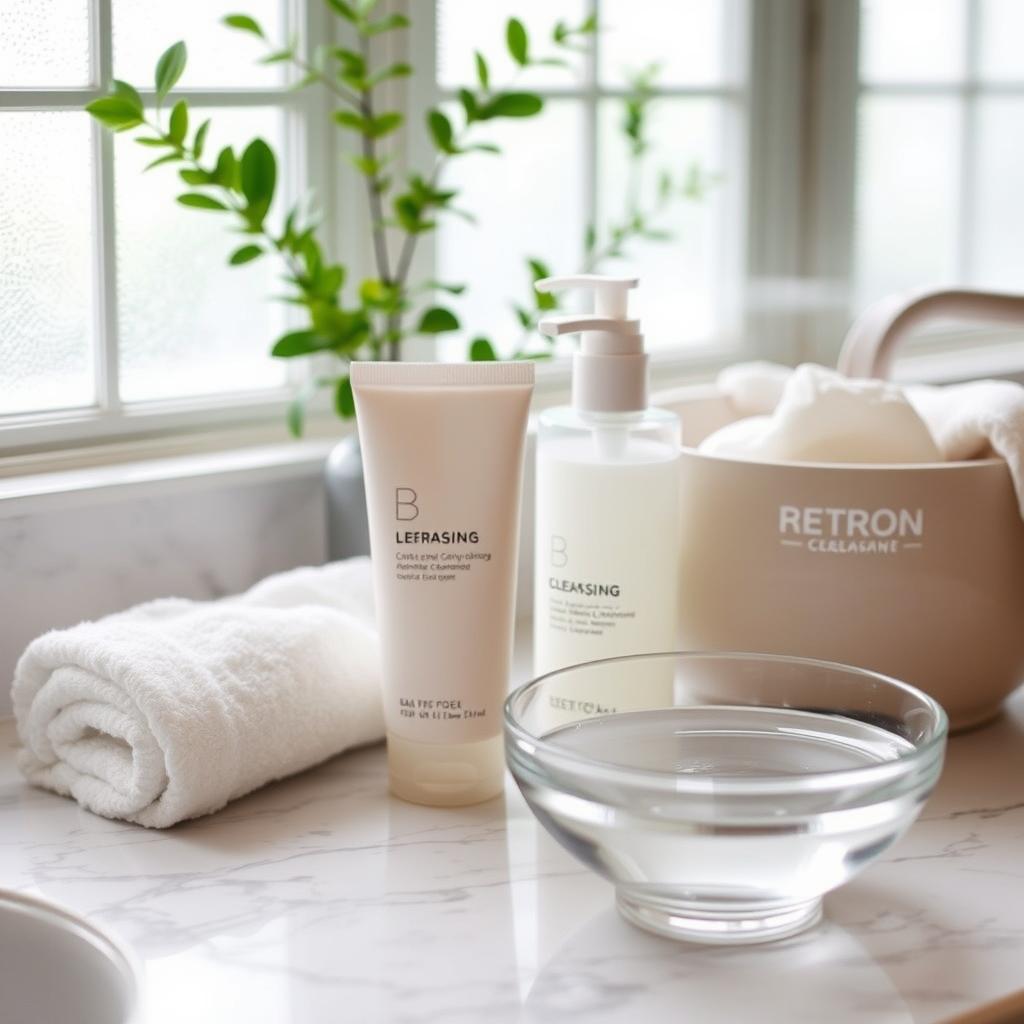
For dry skin, cream and lotion cleansers are a big help. About 80% of people with dry skin find these gentle cleansers beneficial.
Types of Cleansers for Dry Skin
- Cream Cleansers: Ideal for maintaining skin’s natural lipid barrier
- Oil-Based Cleansers: Provide deep hydration (favored by 75% of dry skin users)
- Micellar Water: Gentle, no-rinse option with 80% user satisfaction
Ingredients to Look For
Natural Remedies are important for dry skin care. Look for these key ingredients:
- Glycerin: Helps lock in moisture
- Ceramides: Restore skin’s protective barrier
- Hyaluronic Acid: Attracts and retains skin hydration
“The right cleanser can transform your skin from dry and tight to soft and supple.” – Dermatology Insights
How to Properly Cleanse
My cleansing method uses gentle, lukewarm water and minimal rubbing. Pat your skin dry instead of rubbing. Always moisturize after to keep hydration in.
Pro tip: Stay away from foaming cleansers that can remove your skin’s natural oils. Cream-based and milky cleansers are your best friends for maintaining skin health.
Exfoliation: When and How
Exfoliation can be tricky, even for those with dry skin. It’s important to know the right methods to avoid flaky skin and keep your skin healthy.
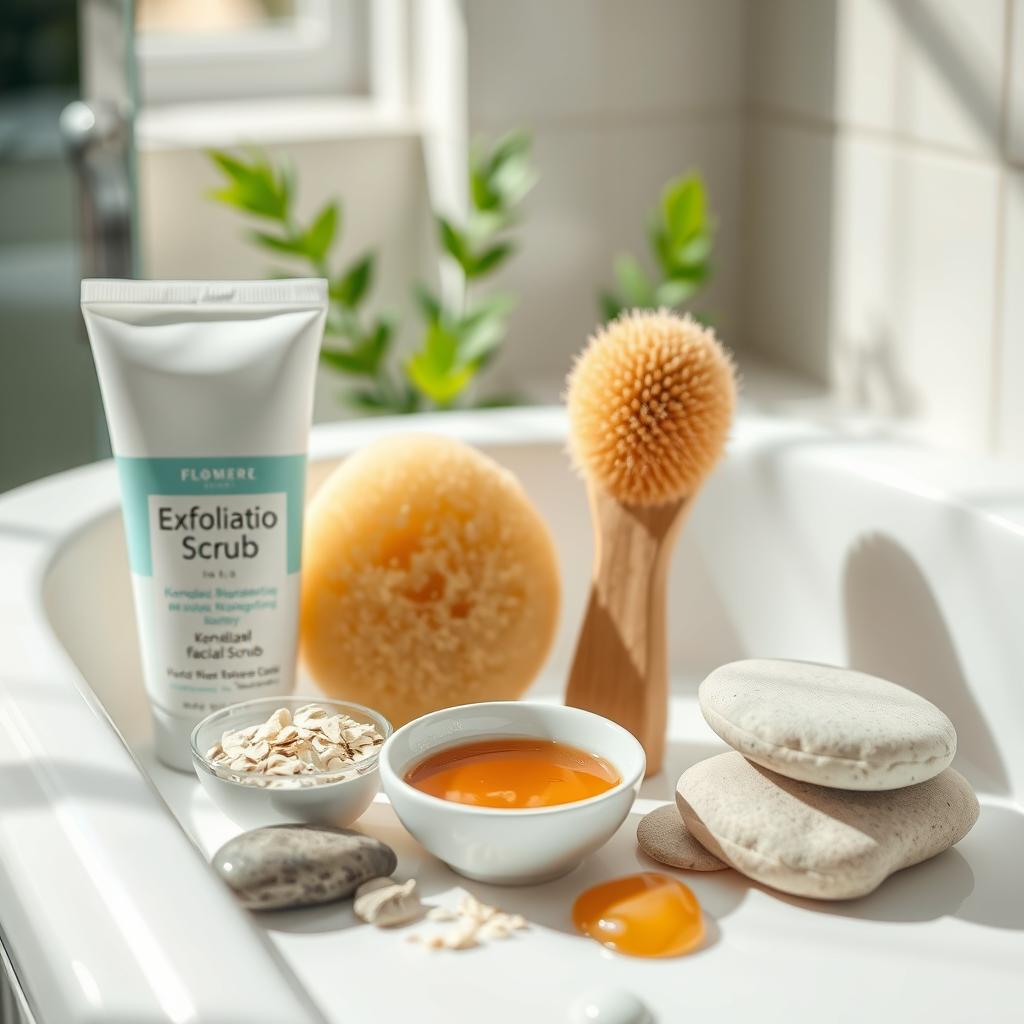
Exfoliation is key in skincare. It removes dead skin cells and helps new cells grow. For dry skin, you need to be careful and precise.
Benefits of Exfoliating Dry Skin
- Removes dead skin cells
- Improves skin texture
- Enhances product absorption
- Stimulates skin renewal
Recommended Exfoliation Frequency
Experts say exfoliate 1-3 times a week for most skin types. Chemical exfoliants are great for dry skin. They can make your skin up to 40% smoother.
| Exfoliation Type | Frequency | Skin Benefits |
|---|---|---|
| Chemical Exfoliants (AHAs/BHAs) | 1-2 times weekly | Enhanced skin luminosity up to 25% |
| Mechanical Exfoliation | 1 time weekly | Improved skin clarity by 50% |
Best Exfoliating Products
For dry skin, choose gentle products with hydrating ingredients. Look for ceramides and hyaluronic acid. They can keep your skin moist and protect it while removing dead cells.
Gentle exfoliation is key to revealing smoother, more radiant skin without compromising its health.
By following these tips, you can prevent flaky skin. You’ll learn how to exfoliate gently and keep your skin looking great.
The Role of Toners in Hydration
Toners have changed the game in skincare, moving from harsh to hydrating. They are now key for dry skin, bringing many benefits beyond just cleaning.
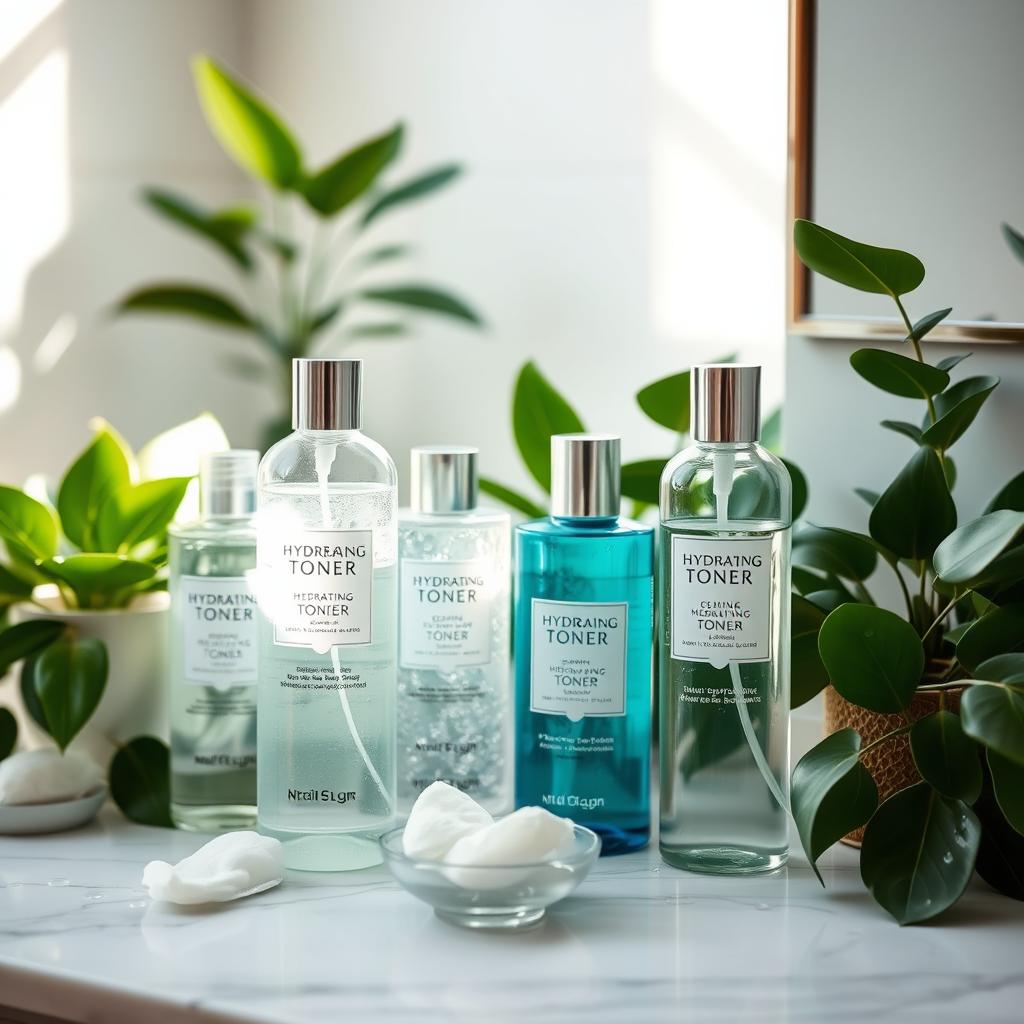
Understanding Modern Toners
Today’s toners are advanced skincare items. They balance and get skin ready for more treatments. They help restore skin’s natural pH and keep moisture in.
- Replenish skin’s moisture levels
- Prepare skin for anti-aging solutions
- Remove residual impurities
- Support skin’s natural barrier
Toners vs. Moisturizers: Key Differences
Toners and moisturizers both hydrate, but in different ways. Toners are light liquids that soak in fast. Moisturizers, on the other hand, form a protective layer.
| Toners | Moisturizers |
|---|---|
| Thin consistency | Thick, creamy texture |
| Prepares skin | Seals in moisture |
| Quick absorption | Longer-lasting protection |
Best Toners for Dry Skin
For dry skin, look for toners with hydrating ingredients like hyaluronic acid and glycerin. These help boost moisture and support anti-aging.
“84% of consumers report that using a toner improves their skin hydration.” – Skincare Research Institute
Choose toners that are gentle and alcohol-free. They should nourish and protect sensitive skin. The right toner can make your skincare routine better and keep your skin healthy and glowing.
Hydrating Serums: A Key Step
Dry skin needs extra care, and hydrating serums are my go-to for a healthy glow. These lightweight serums deeply moisturize the skin’s layers.
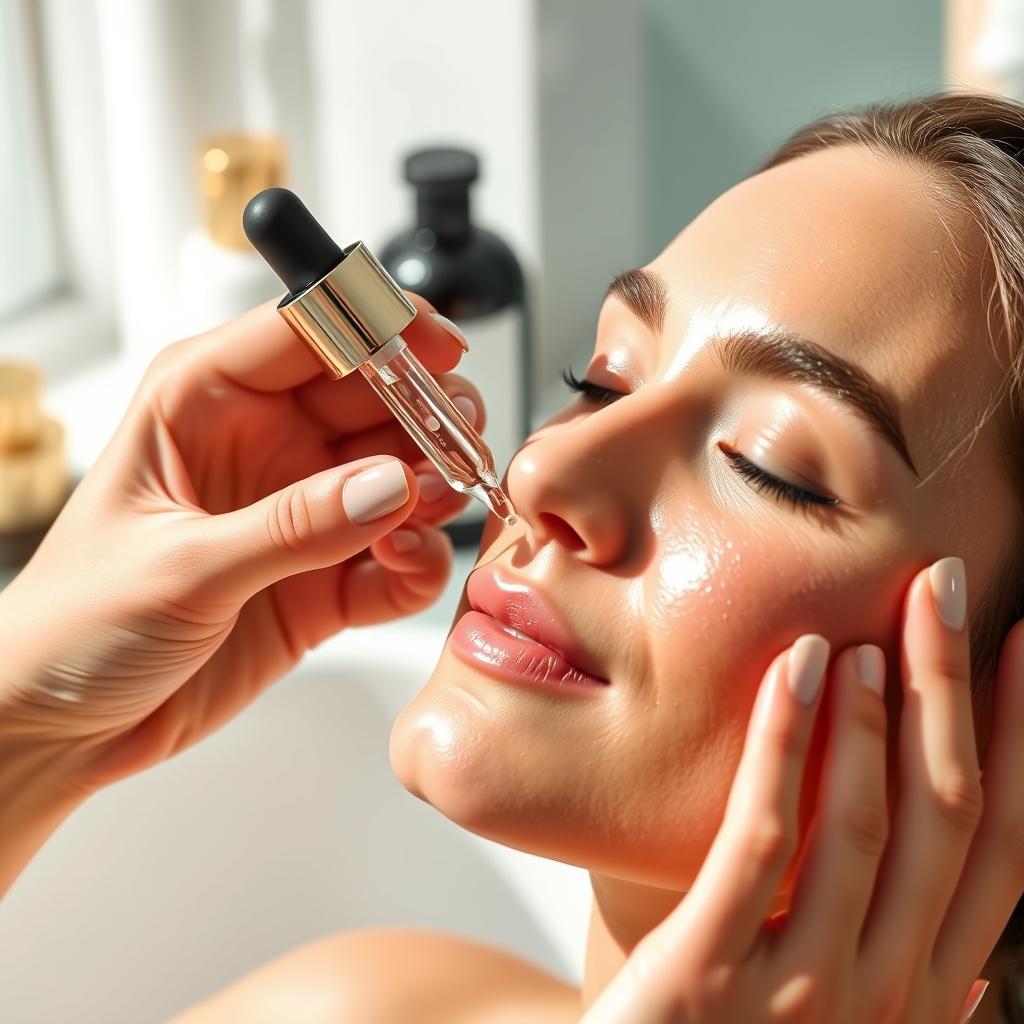
Hydrating ingredients are key for dry skin. Serums are more than skincare products. They’re a focused way to moisturize, improving skin texture and hydration.
Understanding Hydrating Serums
A hydrating serum is a thin, fast-absorbing liquid with strong active ingredients. Unlike thick creams, serums go deeper into the skin. They provide intense moisture where it’s most needed.
Key Ingredients to Seek Out
- Hyaluronic Acid: Holds up to 1000 times its weight in water
- Niacinamide: Helps strengthen skin barrier
- Glycerin: Natural humectant that attracts moisture
- Ceramides: Supports skin’s protective layer
Application Techniques for Maximum Hydration
My top moisturizing techniques for serum application include:
- Apply to slightly damp skin for better absorption
- Use 2-3 drops per application
- Gently pat into skin, don’t rub
- Follow with moisturizer to lock in hydration
Pro tip: Damp skin is 10 times more absorbent than dry skin, making serum application on slightly wet skin incredibly effective.
Products like the Good Molecules Hyaluronic Acid Serum are great for dry skin. It has over 4,000 positive Amazon reviews and costs just $6. It’s a budget-friendly choice for deep hydration.
Consistency is key in your skincare routine. Adding a high-quality hydrating serum will greatly improve your skin’s moisture and look.
Selecting the Perfect Moisturizer
Finding the right moisturizer for dry skin can be tough. My dry skin care routine needs a careful plan to find the best hydration. Knowing the differences between moisturizers is important for keeping skin healthy and comfortable, all year round.
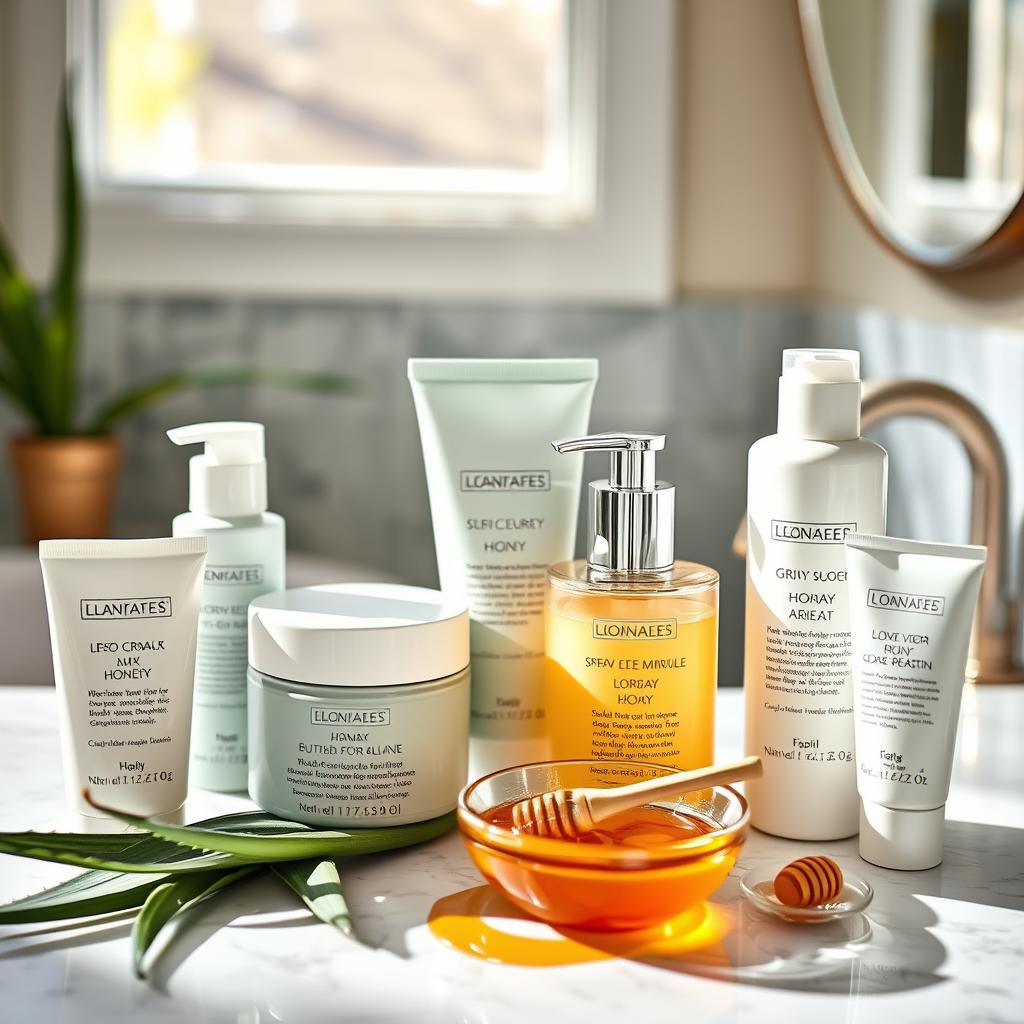
Types of Moisturizers for Different Needs
Choosing a moisturizer for dry skin is not simple. There are many types available:
- Cream moisturizers: Thick and rich, great for deep hydration
- Lotion moisturizers: Light and simple to use
- Gel-based moisturizers: Good for adding layers in winter
- Balms: Best for very dry skin
Key Ingredients to Seek Out
Research shows 55% of people like moisturizers with hyaluronic acid. The best moisturizers have:
- Hyaluronic acid: Holds and keeps moisture
- Ceramides: Makes skin barrier stronger
- Natural oils: Nourishes deeply
- Glycerin: Keeps moisture in
Application Tips for Maximum Hydration
“The right moisturizer applied correctly can transform your skin’s health and appearance.”
Winter skincare tips say to apply moisturizer to damp skin. Use gentle, upward strokes. About 40% of people with dry skin feel tight and flaky, so moisturizing often is important.
Always do a patch test – 70% of people might react to new products without testing. Pick a moisturizer that fits your skin type. Be patient, as experts say it takes 4-6 weeks to see the best results.
Sunscreen: Protecting My Skin
Keeping my skin safe from UV rays is key to my Anti-Aging Solutions plan. Sun protection is more than avoiding sunburn. It keeps my skin healthy and stops early aging.
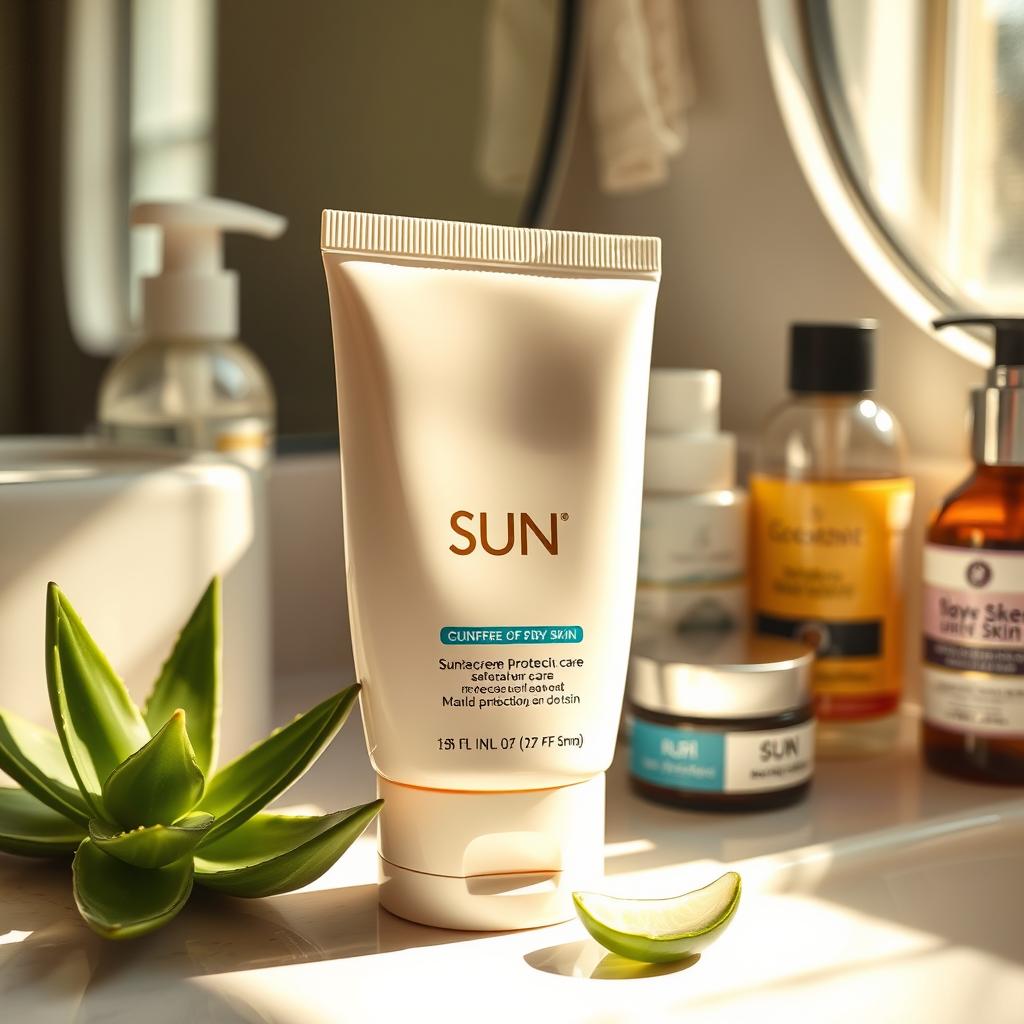
Daily Sunscreen: A Non-Negotiable Skincare Step
The American Academy of Dermatology says everyone should use sunscreen daily. For my Sensitive Skin Products, I’ve found sunscreen does more than protect. It keeps my skin’s moisture barrier strong and prevents long-term harm.
Choosing the Right Sunscreen for Dry Skin
When picking a sunscreen, I look for certain things:
- Minimum SPF 30 protection
- Moisturizing formulas with Hyaluronic acid
- Broad-spectrum coverage
- Non-greasy texture
Sunscreen Application Techniques
How you apply sunscreen is key for good protection:
- Apply sunscreen 15 minutes before going out
- Use two finger-lengths for your face
- Reapply every two hours
- Use a shot glass worth for your body
| SPF Level | UVB Ray Protection | Recommended Use |
|---|---|---|
| SPF 30 | 97% protection | Daily use |
| SPF 50 | 98% protection | Extended sun exposure |
“Just 15 minutes of unprotected sun exposure can start damaging skin.” – Skin Health Experts
Key Insight: Using sunscreen every day is a must for Anti-Aging Solutions, even more so for those with Sensitive Skin Products needs.
Nighttime Skincare Routine
As the day ends, my skin starts its most important repair work. Nighttime is when moisturizing and anti-aging solutions really shine. It’s a time for deep healing.
Why Night Care Matters
While I sleep, my skin regenerates fast. Blood flow to the skin increases, helping it absorb nutrients better. This is why my nighttime skincare is so important for keeping my skin hydrated and young.
Best Practices for Night Products
- Apply products from lightest to heaviest texture
- Wait 1-2 minutes between product layers
- Focus on hydrating and repairing ingredients
- Use targeted anti-aging solutions
Recommended Night Creams and Treatments
Choosing the right night cream is key to better skin. Look for ones with hyaluronic acid and peptides. They help with deep moisturizing.
| Product Type | Key Benefits | Recommended Usage |
|---|---|---|
| Overnight Repair Cream | Deep hydration, skin barrier restoration | Apply after serum, massage gently |
| Retinol Night Serum | Cell turnover, anti-aging solutions | Use 2-3 times weekly |
| Hydrating Facial Oil | Intense moisture, skin nourishment | Apply as final step in routine |
“Nighttime is when your skin does its most important work. Treat it right, and you’ll wake up with a radiant, youthful glow.” – Skincare Expert
My nighttime skincare routine is all about letting my skin recover, hydrate, and renew. Consistency is key for lasting results with these moisturizing and anti-aging solutions.
Seasonal Adjustments for My Skincare
Keeping my skin healthy through the seasons is a big job. Winter Skincare Tips are key when it gets cold and dry. Indoor heat makes it even harder to keep my skin moist.
Seasonal changes really mess with my skin. In the cold months, I focus on stopping flaky skin. This is a big deal for people with dry skin.
Why Seasonal Changes Impact Skin
Seasons change how my skin feels and looks. Studies show that:
- 30% of people get drier skin in fall and winter
- Cold weather makes my skin lose moisture
- Heating indoors takes away even more moisture
Adapting My Skincare Routine
My winter skincare plan includes a few important changes:
- I use thicker, more hydrating moisturizers
- I add hydrating face masks to my routine
- Using humidifiers helps keep moisture in the air
| Season | Skincare Focus | Key Products |
|---|---|---|
| Winter | Deep Hydration | Ceramide-rich creams |
| Summer | Oil Control | Lightweight gel moisturizers |
Best Products for Different Seasons
I choose products that match the season. Hyaluronic acid and ceramide-based moisturizers are great for winter. They help keep my skin from getting flaky and stay hydrated.
“Adapting your skincare routine is not just about products, but understanding how environmental changes impact your skin’s health.” – Dermatology Expert
By following these Winter Skincare Tips, I keep my skin healthy all year. It’s all about making the right changes for each season.
Hydration from Within
Managing dry skin starts with hydration from the inside. Natural remedies are key to skin health. What we eat is as important as what we put on our skin.
The body is a complex system, and skin hydration shows this. The U.S. National Academies of Sciences, Engineering, and Medicine say we need:
- 2.7 liters of water a day for women
- 3.7 liters for men
The Importance of Drinking Water
A 2018 study found water’s big role in skin health. Drinking more water makes skin more hydrated. It also makes skin less dry and more elastic.
Foods That Hydrate Skin
Not just skincare products hydrate skin. Some foods can really help keep skin moist:
| Food Category | Hydration Benefits |
|---|---|
| Water-rich fruits | Cucumber, watermelon, strawberries |
| Omega-3 rich foods | Salmon, chia seeds, walnuts |
| Leafy greens | Spinach, kale, lettuce |
Supplements for Dry Skin
Some supplements help hydrate skin from the inside. Hyaluronic acid and omega-3 fatty acids keep skin moist. They also help skin look healthy and bright.
“Your skin is a reflection of your internal health. Nourish it from the inside out.” – Dermatology Insight
Using skincare products and drinking water together helps keep skin healthy for a long time.
Lifestyle Factors Affecting Dry Skin
Understanding how our lifestyle choices affect our skin’s moisture is key. Anti-Aging Solutions go beyond just products. They involve a holistic approach to skin wellness.
How Stress Impacts Skin
Stress can harm our skin’s hydration. When I’m stressed, my skin struggles more with flakiness. Cortisol, the stress hormone, weakens the skin’s barrier, causing more moisture loss.
- Elevated stress triggers inflammatory responses
- Compromises skin’s natural protective mechanisms
- Reduces skin’s ability to retain moisture
The Role of Sleep and Skin Health
Quality sleep is vital for skin regeneration. Deep sleep helps my body repair and rebuild skin cells. This is key for keeping my skin healthy and hydrated.
| Sleep Duration | Skin Health Impact |
|---|---|
| Less than 6 hours | Increased skin dehydration |
| 7-9 hours | Optimal skin repair and hydration |
Environmental Considerations
External factors greatly affect our skin’s moisture. Low humidity, indoor heating, and air conditioning dry out our skin. To fight this, I use humidifiers and protective moisturizers.
“Your environment is as important as your skincare routine in Preventing Flaky Skin.”
By understanding and adapting to these lifestyle factors, I’ve learned to create a more skin-friendly environment. This supports my dry skin care routine.
Regular Dermatological Check-ups
Dealing with dry skin can be tough. Getting help from a dermatologist can change everything. They offer advice that’s tailored just for you, something you can’t get from store-bought products.
Why I Consult a Dermatologist
Getting advice from a dermatologist is key to understanding your skin. They know which products are safe for sensitive skin. Here’s why I go:
- They help find out what’s wrong with my skin
- They create a plan just for me
- They teach me about new skincare methods
- They help avoid serious skin problems later
What to Discuss During My Visit
Before I see a dermatologist, I gather important info. I talk about:
- What I’m doing for my skin now
- My dry skin problems
- My family’s skin history
- Any changes in my skin
Treatments That May Be Recommended
Dermatologists have many ways to help with dry skin. They might suggest:
| Treatment Type | Potential Benefits | Average Cost |
|---|---|---|
| Prescription Moisturizers | Intensive hydration | $50-$150 |
| Retinol Treatments | Cell turnover improvement | $95 per treatment |
| Hyaluronic Acid Serums | Deep skin hydration | $70-$120 |
“Your skin is a reflection of your overall health. Regular check-ups can prevent minor issues from becoming major concerns.” – Dermatology Expert
By choosing to see a dermatologist, I’m taking care of my skin. This helps me manage dry skin and keep my skin healthy for the long run.
DIY Home Remedies
Natural remedies can be a great help for your skin. I’ve found amazing ways to moisturize dry skin with kitchen ingredients. While store-bought products are key, DIY methods are affordable and natural.
Natural Oils for Skin Hydration
Discovering natural oils can change your skincare game. Here are some top picks for dry skin:
- Coconut oil: Deeply moisturizing and antibacterial
- Jojoba oil: Mimics skin’s natural sebum production
- Argan oil: Rich in vitamin E and antioxidants
Homemade Masks for Dry Skin
Making your own masks can deeply hydrate your skin. My go-to recipes are:
- Honey and avocado mask
- Oatmeal and yogurt soothing treatment
- Aloe vera and green tea hydrating blend
| Ingredient | Skin Benefits | Application Tips |
|---|---|---|
| Honey | Antimicrobial, moisturizing | Use raw, unprocessed honey |
| Aloe Vera | Hydrates, stimulates collagen | Apply fresh gel directly to skin |
| Avocado | Increases skin elasticity | Mash and apply as a mask |
When to Avoid DIY Treatments
Not every natural remedy works for everyone. Caution is key when trying DIY skincare. Stay away from home treatments if you have:
- Sensitive skin conditions
- Active skin infections
- Recent skin treatments
Always patch test new ingredients and consult a dermatologist if you’re unsure about a treatment.
Natural remedies can be a great addition to your skincare routine. But they shouldn’t replace professional products. Listen to your skin and use DIY treatments wisely.
Conclusion: Embracing My Skin
My journey to understand dry skin care has changed me. I’ve learned that being patient and dedicated is key to healthy, glowing skin. Dermatologists have shown me the best products and methods for keeping my skin hydrated and healthy.
We’ve looked at how to tackle dry skin in this guide. We’ve talked about choosing the right cleansers and how important hydration is. Each step is vital for keeping your skin in top shape. Studies show that up to 85% of people see better skin texture with regular moisturizing.
Remember, everyone’s skin is different. What works for one might not work for another. Be kind to yourself and your skin. Try different products, see how your skin reacts, and don’t hesitate to see a dermatologist if needed. Protecting your skin from pollution and UV rays is also important.
Your skin is your biggest organ and it needs your attention. By being consistent, informed, and proactive, you can create a skincare routine that fights dryness and boosts your confidence.
FAQ
How long does it take to see improvements in my dry skin?
Can I use the same skincare routine year-round?
Are natural oils effective for dry skin?
How often should I exfoliate dry skin?
Do I really need a separate serum and moisturizer?
Can diet really impact my dry skin?
Is it necessary to see a dermatologist for dry skin?
How much sunscreen should I apply daily?
Can I use the same products for day and night?
Source Links
- 7 Tips for Treating Dry Skin on Your Face
- How to Apply Your Skin Care Products in the Right Order
- Best Skincare Routine for Dry Skin
- How To Build a Skincare Routine for Dry, Dehydrated Skin
- The Perfect Skincare Routine for Dry Skin, Recommended by Dermatologists
- How to Choose the Right Cleanser — Skinthusiast
- What’s the Ideal Facial Cleanser for Your Skin Type?
- The Ultimate Skincare Routine Guide | The INKEY List
- Exfoliate or Cleanse First: The Right Skincare Sequence | Murad
- 3 Key Benefits of Adding Toner to Your Skincare Routine, According to Experts
- The Role of Toners in Your Skincare Routine: What You Need to Know
- These Derm-Approved Serums Hydrate from the Inside Out
- Do I Apply Serum to Dry Skin?
- Cinta Aveda Institute
- Choosing the Right Moisturizer for Your Skin Type: SINY Dermatology: Dermatology
- Skincare Routine for Dry Skin | Eucerin
- The Perfect Summer Skincare Routine for Dry Skin
- A Complete Guide to SPF | Biossance
- Skincare Routine Order: A Basic Guide
- 5-Step Skincare Routine for Dry, Dehydrated Skin | Lancôme
- How to Transition Your Skincare Routine for Each Season
- 13 Skin-Care Products That’ll Get You Through Winter
- A skin care guide for every season
- How to Hydrate Skin Like a Pro, According to Dermatologists
- How to Hydrate Skin | Eucerin
- How To Treat Dry And Dehydrated Skin In The Right Way
- Dry Skin: Symptoms and Treatment | Dermatology of Central Ohio
- Dry Skin: Causes and Treatment | Riva Dermatology
- We Asked Top Dermatologists to Share Their Skin-Care Routines—Plus, the Products They Actually Use
- The Vital Importance of Regular Skin Exams in Texas | Tru-Skin Dermatology
- What Are the Benefits of Regular Medical Dermatology Check-ups?
- 13 Natural Dry-Skin Remedies to DIY
- DIY Skin Care for Face and Body
- Unlock Better Skin With a Relaxing Skin Care Routine
- Embrace Healthy, Hydrated Skin This Winter

